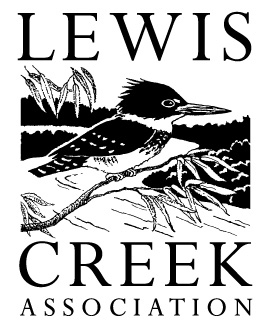Charlotte, VT - What is stormwater, and how can you help manage it to promote healthier watersheds? How To Manage Stormwater To Promote Healthier Watersheds: An Ahead of the Storm Guide was recently published to help you assess and understand where problems might be occurring on the land near you, and what opportunities there are to improve these areas. Lewis Creek Association (LCA), along with partners, has released this new guidance manual that will help answer these questions.
Over the course of the past year and a half, LCA has collaborated with a variety of partners (SLR Consulting, Lake Champlain Sea Grant, Vermont Department of Environmental Conservation, and the Lake Champlain Committee) to develop materials, photos, and examples of how to assess the land near you, and what solutions to better manage stormwater and improve water quality may be possible. The final manual, is now available on LCA’s website and among other partners websites, as well as in local libraries in the Lewis Creek and LaPlatte watersheds: Bristol, Charlotte, Hinesburg, Monkton, Shelburne, Starksboro, Vergennes, and Williston. It is applicable to properties in the Lake Champlain Basin, including New York. However, the concepts contained within it apply to any area in the Northeast or beyond.
You can learn more about the problem and what landowners can do to improve water quality in a brief 17-minute presentation on LCA’s website at https://bit.ly/lca-wq-videos. These include things like slowing water down, spreading it out, and sinking it into the ground (“the three S’s” that are central to LCA’s Ahead of the Storm program. You can learn more about the Ahead of the Storm program at https://bit.ly/lca-aots ). It is crucial that we all do our part to improve water quality in small ways, in order to improve Lake Champlain’s water quality and beauty, and to protect the animals and plants that live in our waterways.
The funding for this project also allowed LCA and partners to hold workshops to help landowners in neighborhoods with poor water quality understand the connection between their actions on the land and the quality of the water in their area. They introduced neighbors to some of the wildlife (bats, and amphibians and reptiles) that depend on clean water for their life cycles.
This project has been funded wholly or in part by the United States Environmental Protection Agency under assistance agreement (LC00A007070) to NEIWPCC in partnership with the Lake Champlain Basin Program.



